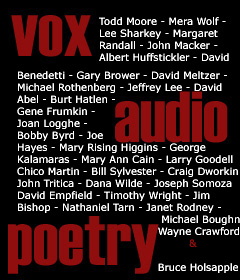
Phil Minton
The town of Torquay, in England’s Devon County, sometime around 1957. A kid a couple of years out of school and as many years into unwelcome labor at a printing plant, is introduced to the work of painter Jackson Pollock, courtesy of an art-student friend’s book of reproductions. The kid, who’s been listening to John Coltrane and wood shedding trumpet licks, searching for new modes of musical expression, drinks in the riots of colour, the explosions of nonfigurative streaks, splatters, blobs, drips, squirts, and dribbles, and decides, “That’s what music should sound like”.
It wasn’t long before the kid (Phil Minton, of course), was working towards that goal in company with two youthful friends. One of them (the aforementioned art student) “threw paint around,” Minton tells us, while the other played a walking bass, and Minton himself, who had, as a boy chorister, amused his fellow singers and infuriated the conductor by doing funny-voice fills (“Minton,” a music teacher at school once told him, “you’re mental. But you seem to be musical somehow”), weighed in with a torrent of unorthodox vocal emissions unleashed amid vigorous thrashing and rolling about (“I was quite gymnastic,” he reports). Inspired as they were by action painting (the name given to the work of Pollock and other abstract expressionists), they called their performance “action music”. The trio never really went public, and Minton recalls that “Although it was quite exciting to us, we didn’t quite know what we were doing.”
Minton might not have known what he was doing then, but he sure knows what he’s doing now – as he has for many years. The radical vocal effects (and, it should be noted, non-vocal oral effects as well) bear testimony to four decades of dedicated exploration and development. The technical process – the tuba-to piccolo pitch range; the reedy multiphonics; the uninhibited lip, tongue, and cheek soundings; the creaks and crackles, rasps and pops; the whole virtuosic array – is fused with well-honed artistic instincts, prodigious musicality, and sharply focused aesthetic direction.
The creative vision within which Minton worked these elements unfolded in a variety of contexts, once his dues-paying dance-band days were behind him. He sang and played trumpet (an instrument he gradually left by the wayside) for a number of years with the Mike Westbrook Band. His free improvisational alliances have varied in dimension from duets with percussionist Roger Turner to full orchestral ensembles such as Tony Oxley’s Celebration Orchestra. There have also been closely charted ventures, as in his collaborations with pianist Veryan Weston. And there have been, for almost twenty years, the solo.
It is Minton’s solo work that has had the least recorded documentation. Of all the LPs and CDs on which he appears, there has been until now only one solo singing release, the 1981 Rift Records LP, A Doughnut in Both Hands This second unaccompanied outing then, is long overdue. Like its predecessor, it’s a collection of free improvisations, captured by – but not treated with – electronic means, the material presented just as it was created, without patching and with no editing other than selection from several studio hours of singing. The intervals and chords are simultaneous tones, not overdubbings. The ideas flow within the moment of execution. There are no second takes and no retouchings. There is the natural voice – the original instrument – in all its complexity and diversity, driven by the expressive expedient of response to the creative impulse. “Improvisation,” says Minton, “is the most honest and truthful way I know of performing. ” These thirty songs bear the imprint of the truth that resides at the core of Phil Minton, his physical, emotional, spiritual essence.
The physical dimension of Minton’s art, implicit in a recording, is fully evident in live performance. He doesn’t thrash and roll about as he did in his teens, but the torso-twisting and facial contortions, the crouching and stretching, thrusting from the neck and hunching of the shoulders bespeak the total body commitment integral to his singing. And while he eschews personal emotions in his work (“I’m not doing any cathartic thing, trying to get things out”), there is emotional content of riveting intensity, an exploration of feelings that elude ready (or perhaps any)verbal articulation, feelings sensed but not seized. The work is ultimately, perhaps, less about emotion than about spirituality, explored within pure musical terms, the elements of timbre, dynamics, and rhythm approached without reference to time, beat, tune or tonality. You could fairly call it abstract expressionist singing, or even action singing. It was, after all, just such an integration of body, mind, and spirit that defined action painting, as realized by Pollock and his colleagues. Though Minton works with sound, not paint, he can rightly be included in that company. Toronto, Canada, Paul Dutton. source
selected recordings with Phil Minton





































































Leave a Reply